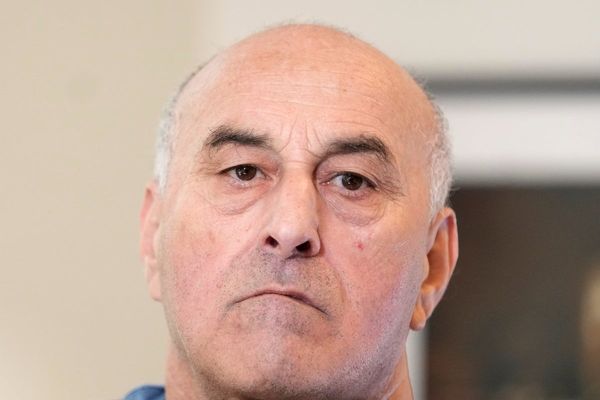
The “Filth”: that was what we called television journalists when I was a police reporter at The Sun News-Pictorial in the 1980s. It was not a term of endearment.
Back then, police rounds were a journalist biodome. Newspaper and radio reporters shared a rabbit warren of rooms a few doors down from the St Kilda Road police complex, and were largely left alone by their motherships as long as they stayed out of trouble and broke yarns.
Breaking yarns was relatively easy for the Sun journos. After all, we vastly outnumbered our competitors, were treated as the police gazette, and had our own network of citizen informants who called in news tips for cash. It was a cutthroat business, but we stayed on friendly terms with the other print and radio journos at St Kilda Road.
The TV journos were different; we saw them as parasites. Let me explain why. Unlike the radio journos, the TV reporters were not a part of the sealed environment at St Kilda Road. Yet they turned up at the big crime stories and, sometimes, begged us for help — trying to bleed us for our hard-won contacts.
Consequently, we called them the Filth. Before any TV journos spell-check outraged emails, let me say this in my defence: there were and are many fine TV journos. And back in the 1980s, given the fact many TV reporters could run rings around my best efforts as a 19-year-old tabloid hack, yes, calling them filth was unfair.
Then again, the term came to mind this week as Nine confirmed 85 staff had been issued redundancies, with the majority being journalists and production staff working across The Australian Financial Review, The Sydney Morning Herald, The Age and titles WAtoday and the Brisbane Times. These are dozens of reporters and staff with irreplaceable experience and contacts.
These redundancies came after Nine’s newspaper journalists went on strike over poor wages during the Paris Olympics. The company’s response was outrageous — filthy, even — and speaks of a TV-centric corporation that doesn’t understand the value of journalism in general and print journalism in particular.
Some context is necessary here. In the late 1990s and early 2000s, I worked in a multimedia newsroom in San Francisco and saw firsthand what could be achieved when TV and print journalists worked together.
The best TV reporters and producers knew how to find, report and tell a story better than most print journalists; the best print reporters had the depth of knowledge necessary to break hard news and recognise trends. All of which is why I was hopeful when Fairfax and Nine merged in 2018.
Since then, the blending of TV and print journalism has, deservedly, elevated the public profiles of newspaper reporters such as Nick McKenzie. And as The Age’s Chip Le Grand pointed out to me this week on X, “terrific broadcast journos working for Nine … helped McKenzie and [investigative reporter Ben] Schneiders break the CFMEU story”.
Fair point. But let’s get back to filth. What’s dirty about the state of Nine is neither the TV nor print journalists. I know they bust a gut for a yarn and are undermanned and outnumbered by flacks. It’s the management. Judging by their actions, journalism is no longer a core business at Nine.
It’s easy to see why. In Nine’s half-year results, from July to December 2023, the company’s revenue was $1.4 billion. The publishing arm accounted for $288 million of that $1.4 billion in revenue, but print’s share was only $112.3 million — far less that TV, Stan and Domain.
The good and bad news is that the newspapers’ electronic arms are growing — digital subscriptions were up 9% — but not fast enough to make up for a $16.4 million loss in print and digital advertising.
A bullish reading of the numbers is that Nine’s newspapers have a healthy profit margin of 26.9% (better than TV, Stan and radio) and can make the jump from an advertising-based business to a subscription-based business. For that to happen, though, Nine’s board needed to maintain — if not strengthen — their TV and print newsrooms so they could produce content that attracts new subscribers.
Instead, they gutted the newsrooms. That false economy isn’t surprising when you look at Nine’s management. Its board directors have little to no reporting background — they’re all about e-commerce and streaming and TV. Neither does CEO Mike Sneesby, who was recruited from Stan.
I’m not saying Sneesby and co are dumb. But as any police reporter worth their salt knows, you need good journalists to break good stories. Journalism is all about the yarn. Doing the hard yards to find and tell the stories that matter — like the CFMEU scoop — takes time and costs money. Doing that and making a healthy profit is, from the perspective of the newspaper business, the equivalent of splitting the atom. But since the merger, that’s exactly what Nine’s news hounds have achieved: breaking hard news while remaining profitable.
All of which is why it’s stunning but not surprising that Nine’s masters let go of many of the primary producers of those profits this week. Stunning because it is an act of self-sabotage. Not surprising because the Nine board are tech, showbiz and business types who either don’t care about or don’t understand journalism.
Either way, I’m filthy.
Are the Nine redundancies a practical response to economic headwinds, or reflective of out-of-touch management? Let us know your thoughts by writing to letters@crikey.com.au. Please include your full name to be considered for publication. We reserve the right to edit for length and clarity.







